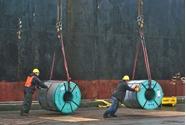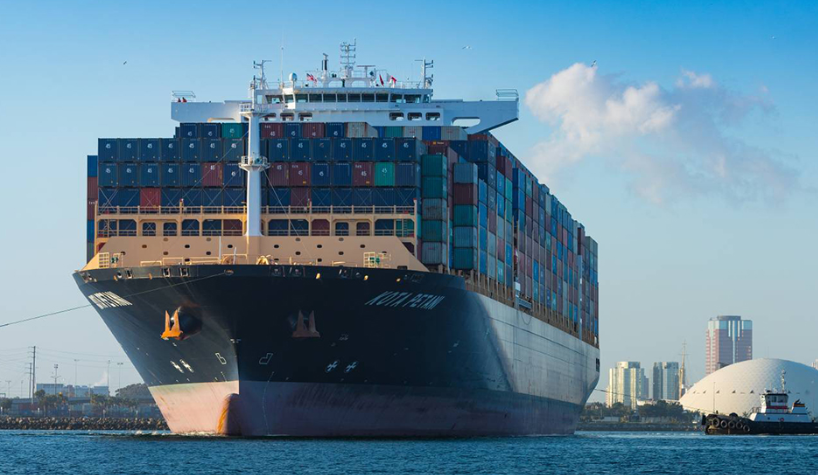Logistics

September 22, 2017
Steel Volumes Increase at Ports
Written by Sandy Williams
Steel imports are on the rise this year at ports on the Gulf and West Coast. Steel imports to the U.S. are expected to reach 39,812,592 net tons this year, an 18.6 percent increase from 2016.
Port of Houston is a major hub for steel imports with 2.05 million tons of steel passing through the port from January to July, a 49 percent rise from 2016. Imports took a plunge of 49 percent in July to 339,792 tons, compared to 666,079 tons in June. Steel exports also registered dramatic change in July, soaring 309 percent to 10,341 tons compared to 2,527 tons in June through the Houston port. The changes appear to be indicative of a cyclical seasonal flow of cargo, said a port spokesperson.
The Port of Houston is nearly back to normal operations following Hurricane Harvey. The Houston Ship Channel above the I-610 bridge is open, but vessels are restricted to daylight hours and limited to 106-foot beam and 33-foot draft. The Turning Basin is limited to a 25-foot draft upstream of City Dock 13 and City Dock 2.
Port Tampa Bay just approved a public-private partnership agreement to expand the Big Bend Channel from 34 feet to 43 feet and widen it from 200 feet to 250 feet to accommodate larger vessels. The expansion is expected to cost more than $60 million and will be funded by $9 million from the federal government and the rest from the Florida Department of Transportation and private company investment. Bidding will start in March, and the port anticipates completion during 2019.
Fiscal year-to-date (Oct.–June), 423,619 net tons of scrap and 247,871 tons of steel products have passed through Port Tampa Bay. Compared to the same period in 2016, scrap cargoes have increased 57 percent and steel cargoes 49 percent.
The Georgia Port Authority reports that trade heated up in the ports of Brunswick and Savannah in August. Brunswick roll-on/roll-off cargo increased 15.3 percent year over year and Savannah TEUs (twenty-foot equivalent containers) increased 5.3 percent. Iron and steel cargoes grew 10.3 percent to 51,644 tons in July.
Iron and steel cargo at Ocean Terminal in Savannah grew 10.3 percent to 51,644 tons in July.
Port growth was attributed to a strengthening economy and pre-holiday shipping, as well as larger vessel transits from the expanded Panama Canal. Automotive shipments were especially strong in August. Expansions for auto processing space will bring Brunswick’s total annual throughput capacity to 1.4 million vehicles.
The Port of New Orleans is the third largest port for imported steel with the bulk of shipments coming from Japan, Korea and Turkey. Last year the port handled 2.48 million tons of steel. Year to date through August, steel imports totaled 1,593,547 tons.
The Port of Mobile reports that steel import volumes have been steady and are expected to match last year’s import volumes. The Alabama State Port Authority reports cumulative steel volumes based on fiscal year Oct. 1 through Sept. 30. For FY 2017, the port expects total steel volume to be about 5,099,645 short tons. The port is not experiencing any warehousing or logistics issues.
Port of Los Angeles reports steel imports totaled 921,065 metric tons (1,015,300 short tons) from January to June. Total cargo volumes at the port set a record-breaking August, moving 847,857 TEUs through the port’s terminals for an increase of 9.2 percent and the second busiest month on record. Year-to-date TEU cargo volume is up 9 percent compared to the same period a year ago.
Pasha’s Los Angeles Terminal handled 2.2 million tons of steel products in 2016 including 1.18 million tons of slabs.







